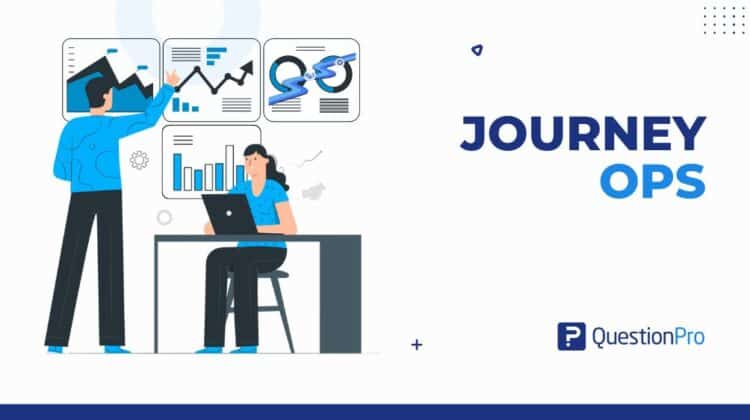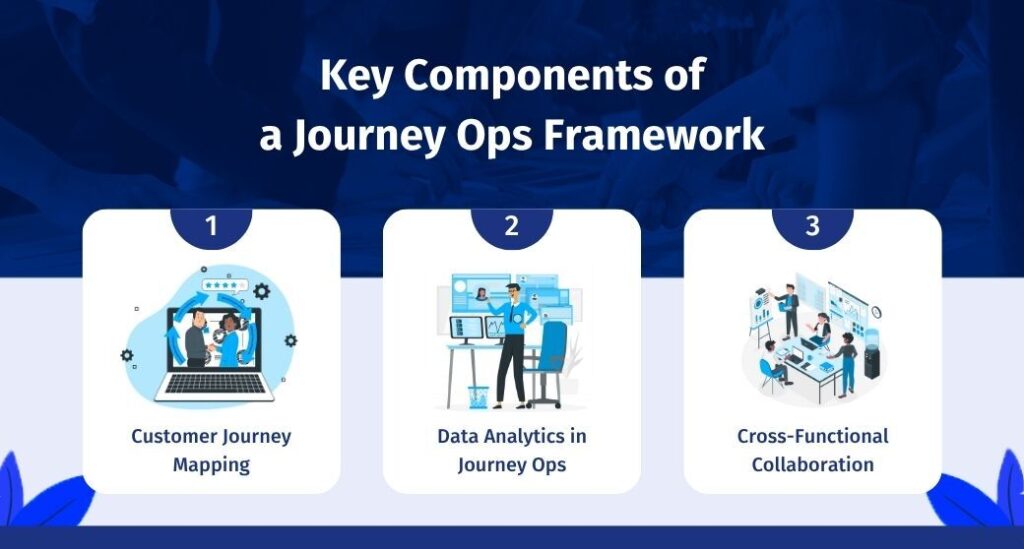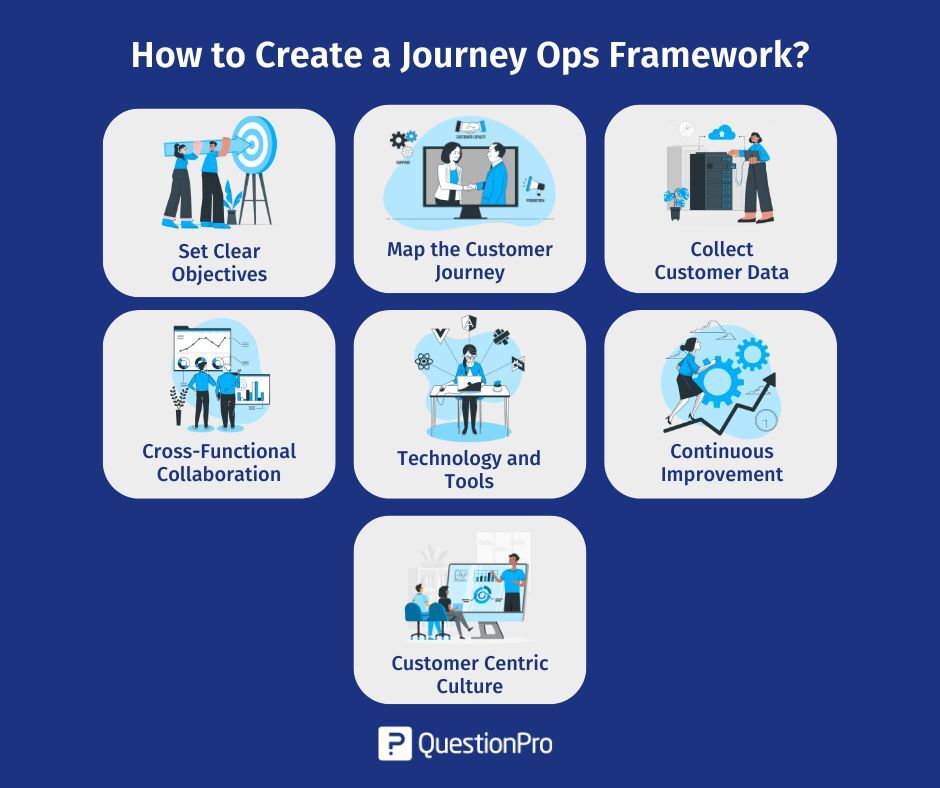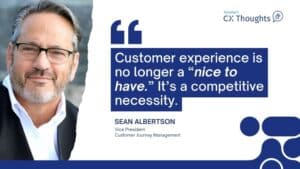
Ever wonder what distinguishes the brands you love from the ones you leave behind? It is the journey, not the products or services. Imagine effortlessly discovering, buying, and receiving items, or a company anticipating your needs before you do. Journey Ops is the framework behind those seamless, satisfying customer experiences that turn one-time buyers into loyal advocates.
Journey Ops is a short form of Journey Operations. It is the backbone of creating those smooth, satisfying customer experiences. It’s how companies turn messy interactions into cohesive, connected experiences that build trust and loyalty.
In this blog, we’ll explore how Journey Ops works, why it’s a game-changer for businesses, and how every step of the customer journey feels intuitive and delightful. Let’s also explore how this is changing the way businesses interact with their customers.
What is Journey Ops?
Journey Ops or Customer Journey Operations is an end-to-end approach to implementing a customer experience (CX) strategy across the entire organization. It brings all departments (sales, marketing, customer support, operations) together to deliver seamless and amazing customer experiences.
Journey Ops means managing and improving customer journeys with data, insights, and teamwork. It combines customer feedback, journey analytics, and business metrics into the decision-making process so every interaction meets or exceeds customer expectations.
This makes customer experience management a continuous and living process. By putting Journey Ops into the DNA of the organization, businesses can break down silos, improve teamwork, and adapt to changing customer needs. In short, Journey Ops is the engine of customer-centric operations, turning insights into action and strategy into tangible results.
Key Components of a Journey Ops Framework
Journey Ops is built on three core elements to make your customer experience seamless, personalized, and always improving. These are Customer Journey Mapping, Data Analytics, and Cross-Functional Collaboration.

1. Customer Journey Mapping
Customer Journey Mapping describes the steps and experiences the customer has when interacting with your brand. It helps you align your strategies and pinpoint where to focus in the journey.
- Visual representation of customer touchpoints:
Journey maps show every point of contact the customer has with your brand, from awareness to post-purchase support.
- Identifying pain points and opportunities:
Mapping reveals the obstacles the customer may face, which you can fix to improve the experience.
- Aligning teams with the customer experience:
A journey map ops ensures all your departments know the customer journey and work towards the same goal.
- Personalizing customer interactions:
Knowing each stage of the journey allows you to customize the messaging, offers, and solutions to the customer’s needs.
2. Data Analytics in Journey Ops
Data analytics in Journey Ops involves gathering and analyzing data from multiple customer touchpoints to understand behavior, preferences, and challenges. By monitoring and analyzing customer data in real-time, you can manage multiple agile projects and respond to customer needs.
- Data across all touchpoints:
Data can be collected from your website, customer service interactions, email responses, and social media to give a complete view of the customer journey.
- Trends and patterns:
Analytics reveals recurring behavior and preferences to guide personalization and improvement.
- Proactive issue resolution:
By analyzing data in real-time, you can fix problems before they escalate and improve customer satisfaction.
- Measuring performance and success:
Data analytics shows how the customer journey is performing and where to adjust to meet your business goals.
3. Cross-Functional Collaboration
Journey Ops is all about collaboration across different departments in your business. Since customers interact with different teams, those teams need to work together to deliver a consistent and cohesive customer experience.
- Breaking down silos:
Collaboration means all your departments are working towards the same goals, eliminating the fragmentation that comes from separate teams.
- Sharing customer insights across teams:
Marketing, sales, IT, and support teams can share customer behavior insights to make better decisions.
- Responsiveness:
Cross-functional collaboration means faster response times to customer issues and overall customer satisfaction.
- Coordinating strategies and actions:
By aligning goals and resources, all teams can contribute to a more personalized and efficient customer experience.
These three components are integral to Journey Ops, which ensures continuous improvement in customer experience and alignment with customer expectations.
When these components work together, they form a system that keeps customer experience consistent and measurable. For example, a SaaS company notices trial users stall on the billing page. By linking in-app events, NPS comments, and support chats, Journey Ops surfaces a confusing step in plan selection. A small copy change and guided tooltip cut churn risk within a week.
Why Journey Ops Matters for Modern Businesses
Journey Ops is becoming more and more important for your business as it’s all about creating seamless, personal, and consistent customer experiences.
In today’s customer-obsessed world, you need to be agile and continuously optimize your customer interactions. Here’s why Journey Ops is essential in your modern business:
- Customer Centric Strategy
- Cross-Functional Collaboration
- Real-Time Decision Making
- Customer Retention and Loyalty
- Operational Efficiency
- Competitive Advantage
By using Journey Ops, you can stay ahead of the market, ensure long-term customer satisfaction, and create a truly customer-centric culture. This allows you to respond to customer needs more efficiently and innovate and adapt to changing market dynamics.
The result is a continuous cycle of improvement in which customer experiences are always evolving and getting more engaging, and your business will thrive and grow.
What are the Differences between Journey Operations and Journey Mapping?
Customer journey mapping and journey operations are related but different. Journey mapping is about understanding the customer journey by identifying touchpoints, emotions, and goals. It’s a one-off effort that produces a static journey map and highlights improvement areas.
Journey operations are about managing and improving the customer journey. It’s an ongoing process of real-time adjustments and long-term strategies to improve interactions across all touchpoints.
Journey mapping is descriptive and limited to CX teams. Journey operations are actionable and require cross-functional collaboration across the organization.
To put it simply, journey mapping is like planning a road trip, detailing routes, scenic stops, and potential challenges. Journey operations are like managing the trip itself—fixing flat tires, finding better detours, and upgrading the car for a smoother ride in the future.
Together, these approaches create a holistic system for understanding and improving the customer experience. Here is a quick overview of the key differences between the two:
| Aspect | Journey Mapping | Journey Operations |
| Focus | Understanding the journey | Managing and improving it |
| Scope | One-time project | Ongoing process |
| Approach | Descriptive | Action-oriented |
| Team Involvement | CX teams | Cross-functional collaboration |
How to Build a Journey Ops Framework for Your Business
Creating a Journey Ops framework is key to delivering seamless, personal, and consistent customer experiences across your business. This framework means your teams work together to optimize and manage every step of the customer journey.
Here’s how to create a Journey Ops framework for your business:

1. Set Clear Objectives
Start by setting clear objectives for your Journey Ops. These should tie in with your overall business goals and customer experience vision. What do you want to achieve – increase customer retention, improve satisfaction, or boost brand loyalty?
Identify your key performance indicators (KPIs):
Make sure your Journey Ops goals are related to your overall business goals, such as growth targets or market expansion.
2. Map the Customer Journey
To manage your customer experience, you need to know the customer journey. That means mapping out every touchpoint, from awareness to post-purchase follow-up, your customer has with your brand.
Identify all the touchpoints where customers interact with your brand:
- Website visits
- Customer service calls
- Social media
- In-store experiences.
Highlight any friction or obstacles at each journey stage that might impact satisfaction or cause drop-off.
3. Collect Customer Data
Customer insight is at the heart of Journey Ops, so you need to gather and centralize all customer data. That way, you can make better decisions and personalize the customer experience across every touchpoint.
- Collect data from multiple sources: CRM systems, analytics tools, customer feedback surveys, and social media channels.
- Real-Time Analytics: Using real-time data to make live changes to customer interactions improves responsiveness and agility.
4. Cross-Functional Collaboration
Journey Ops requires collaboration across different departments. For the framework to work, all teams need to work together to deliver a joined-up customer experience.
- Align Teams: Make sure every department knows its part in customer journey management and how its actions impact customer satisfaction.
- Communication: Schedule regular touchpoints between teams to review the customer journey and discuss changes. Use collaborative tools to keep everyone in sync.
5. Technology and Tools
Technology is key to building and maintaining a customer Journey Ops framework. Implement the right tools to automate, track, and optimize customer interactions across every touchpoint. Customer experience management tools and marketing automation platforms can help you manage and track customer interactions at scale.
Also, journey analytics tools can show you the customer journey and track real-time performance.
6. Continuous Improvement
Journey Ops isn’t a one-off setup; it needs continuous monitoring and improvement. Use data to refine and adjust your customer experience strategy as customer needs and the market change.
- KPIs: Keep an eye on KPIs to see how your journey ops is working.
- Feedback: Ask customers and employees for feedback to identify areas to improve.
- Refine and Optimize: Update the framework based on customer feedback, industry changes, and internal performance metrics.
7. Customer Centric Culture
For your Journey Ops framework to succeed, you need to create a customer-centric culture across your business. This means embedding customer experience in every employee, from leadership to frontline staff.
- Train Employees: Regularly train employees on customer-centric strategies and their part in delivering great experiences.
- Empower Teams: Give your teams the tools, data, and autonomy to make decisions that improve the customer journey.
Implementing Journey Ops with QuestionPro
When you’re implementing Journey Ops, you need software that lets you manage, optimize, and improve every step of the customer journey. QuestionPro has a full suite of features to help you build and visualize your customer journey, collect actionable insights, and drive cross-functional collaboration.
Here’s why QuestionPro is the right choice for your Journey Ops framework:
1. Comprehensive Survey and Feedback Tools
Continuous feedback is key to being customer-centric. QuestionPro has a comprehensive set of survey tools to capture customer insights so you can track the effectiveness of your Journey Ops strategy.
- Real-Time Feedback: You can collect customer feedback at various stages of their journey to understand their sentiments and issues.
- Customizable Surveys: QuestionPro allows you to create surveys based on customer demographics, preferences, and behaviors to gain insights and optimize the journey.
- Multi-Channel Engagement: You can collect feedback through emails, website surveys, and social media to get a 360-degree view of customer experience.
2. Journey Management Tool by QuestionPro
QuestionPro lets you build, visualize, and measure your customer journeys. It’s the central hub for all customer interactions and the single source of truth for every customer experience.
- Rich Persona & Segmentation Data: To better understand your customers, you can create detailed persona profiles and segment them based on various attributes.
- Visualizing Customer Interactions: With QuestionPro’s Journey Management platform, you can use different mapping visualizations (text, iconography, images) to describe customer interactions and create a map of the customer journey.
- Decision-Making Tools: You can make data-driven decisions to improve customer interactions and overall experience.
3. Data Integration and Analytics
QuestionPro integrates data from multiple sources, giving you access to powerful analytics and real-time insights to refine the customer experience. It brings together customer data from CRM systems, social media, email campaigns, and more, so you can see the whole customer journey.
Advanced segmentation and big data can be used to track customer behavior and preferences, resulting in more personalized experiences across touchpoints. You can also measure CX performance over time and identify areas for improvement.
4. Cross-Functional Collaboration
QuestionPro makes aligning and sharing insights easy for marketing, sales, customer service, and IT. Teams can collaborate by sharing insights, customer feedback, and performance data across departments to manage the customer journey as one.
Customizable dashboards allow your teams to see real-time metrics and updates on the customer journey so everyone is in sync with customer needs. You can also assign tasks to teams based on customer feedback and insights, so issues are addressed quickly and effectively.
5. Real-Time Monitoring and Decision-Making
Your Journey Ops needs real-time monitoring to stay agile and responsive. QuestionPro lets you track customer interactions and make data-driven decisions, which can allow you to address challenges and opportunities quickly.
- Instant Reporting: QuestionPro’s real-time reporting lets you track NPS, CSAT, and CES for up-to-the-minute insights.
- Proactive Issue Resolution: Use instant alerts and real-time data to identify and address customer issues early before they become big.
- Performance Tracking: Track the customer journey over time so you can measure success and see where to improve.
Conclusion
By focusing on Journey Ops, your business can have a customer-centric culture, respond to customer needs proactively, and stay ahead of the competition. With continuous optimization, your business will not only meet customer expectations but also exceed them, build loyalty, retain customers, and drive long-term success. In the world of customer experience, Journey Ops is the key to building relationships and sustainable growth.
Journey Ops is a necessity, not a luxury. By putting a Journey Ops framework in place, you can optimize every customer touchpoint and create a seamless, personalized, and responsive experience from start to finish. With QuestionPro, you can map interactions, analyze data in real time, and collaborate across teams to continuously improve and adapt.
Frequently Asked Questions (FAQs)
Answer: Journey Ops, short for Journey Operations, is the internal framework that connects data, teams, and tools to manage and improve the customer journey.
Answer: Journey Mapping is a one-time visualization, while Journey Ops is an ongoing operational process that manages and optimizes journeys in real time.
Answer: It creates consistency across departments, improves CX performance, and helps businesses respond faster to customer needs.
Answer: Journey Ops uses tools for survey feedback, journey mapping, analytics, and automation, such as the QuestionPro Customer Experience software.
Answer: Yes. Any company that wants to connect its customer data, feedback, and processes can benefit from adopting a Journey Ops approach.







